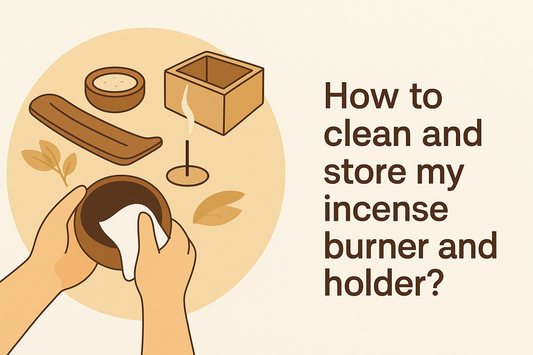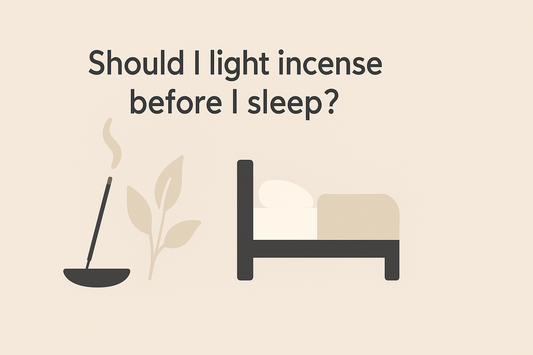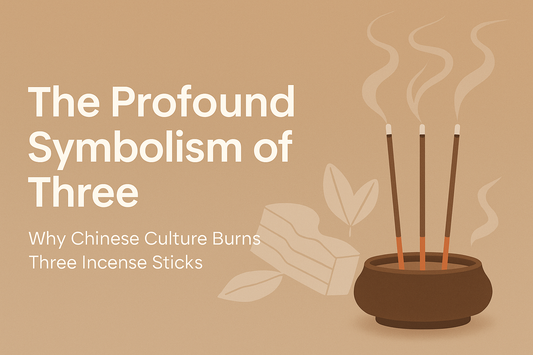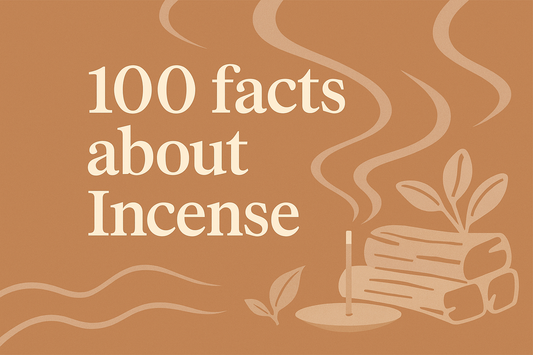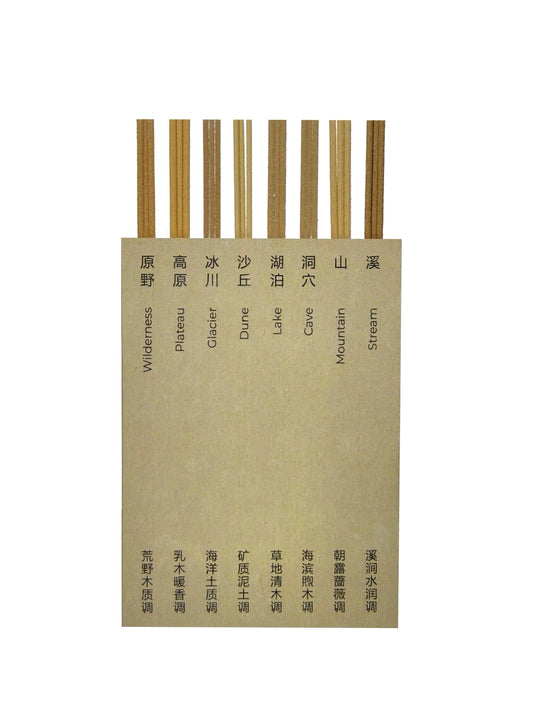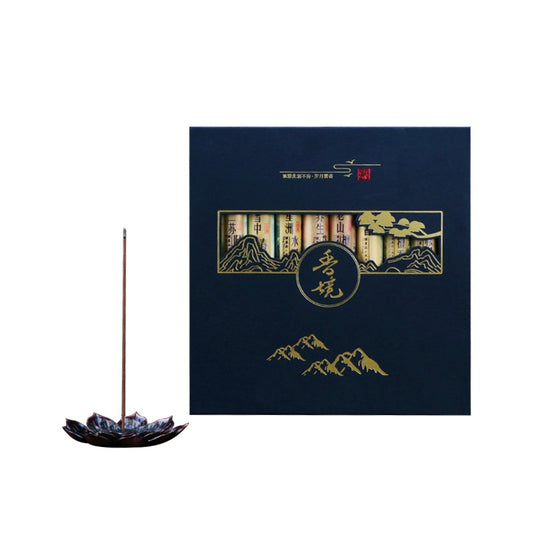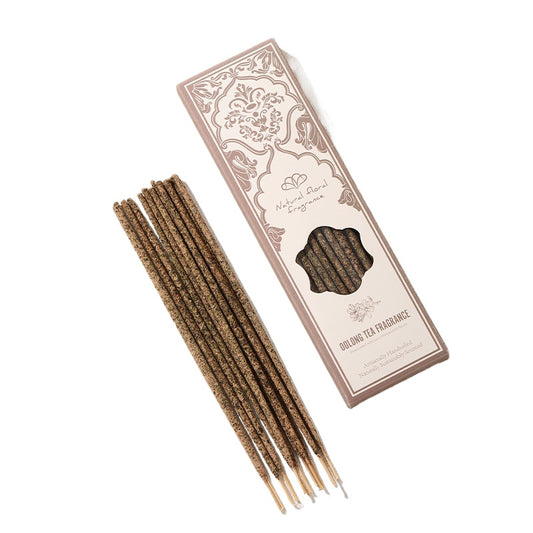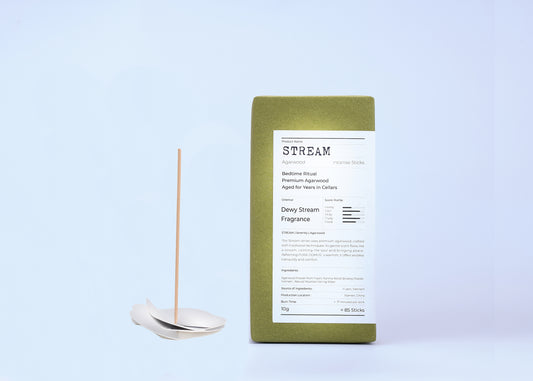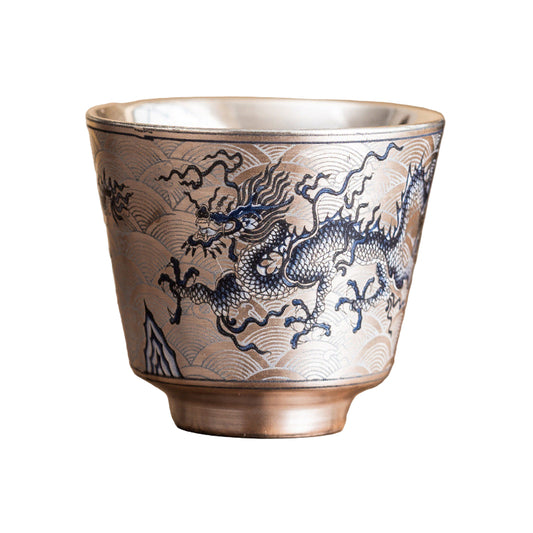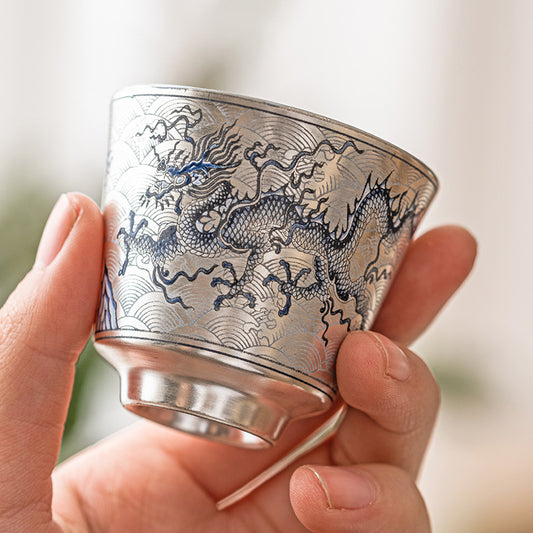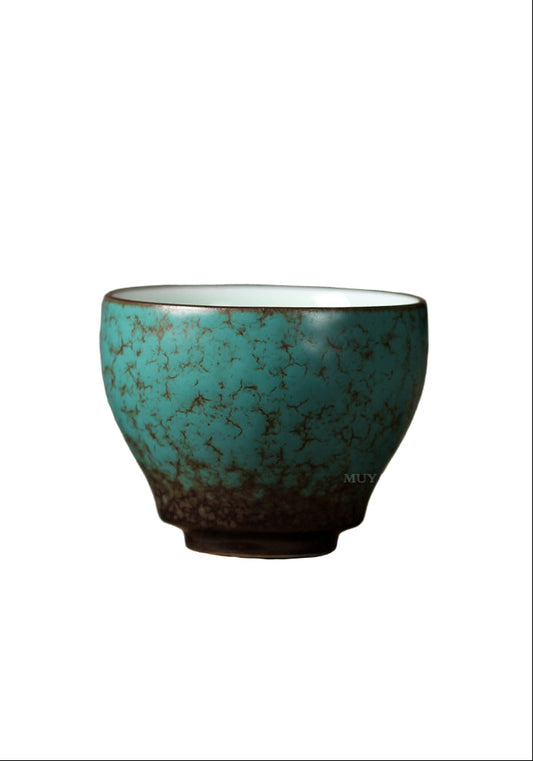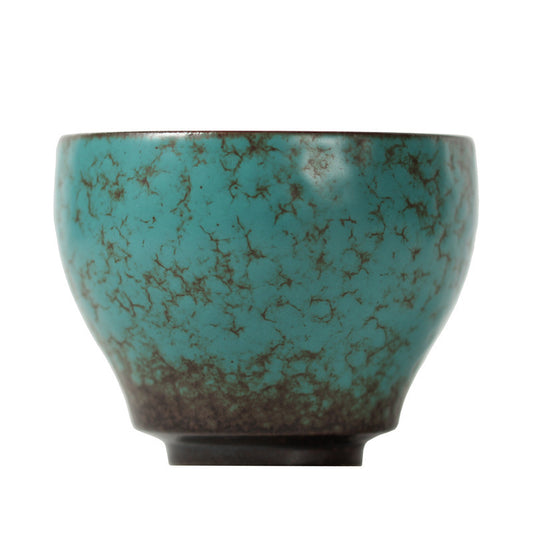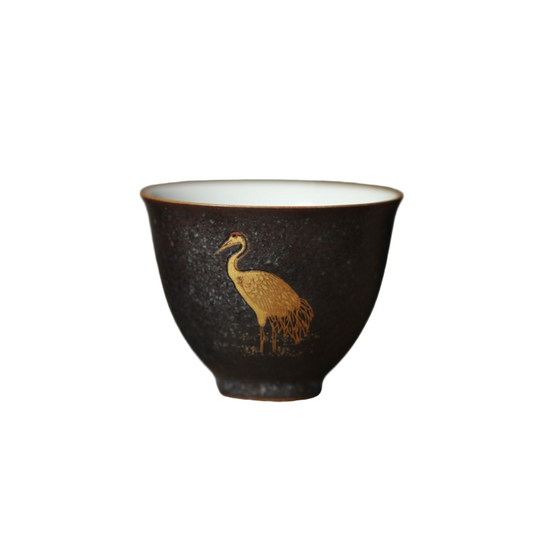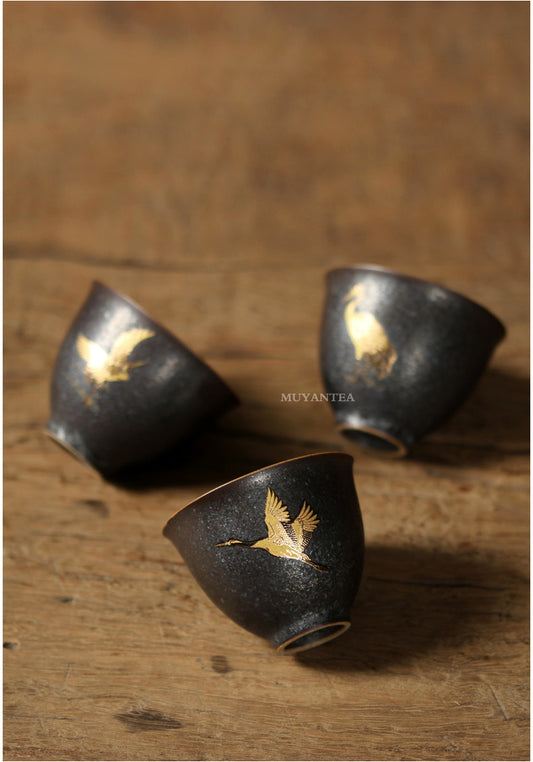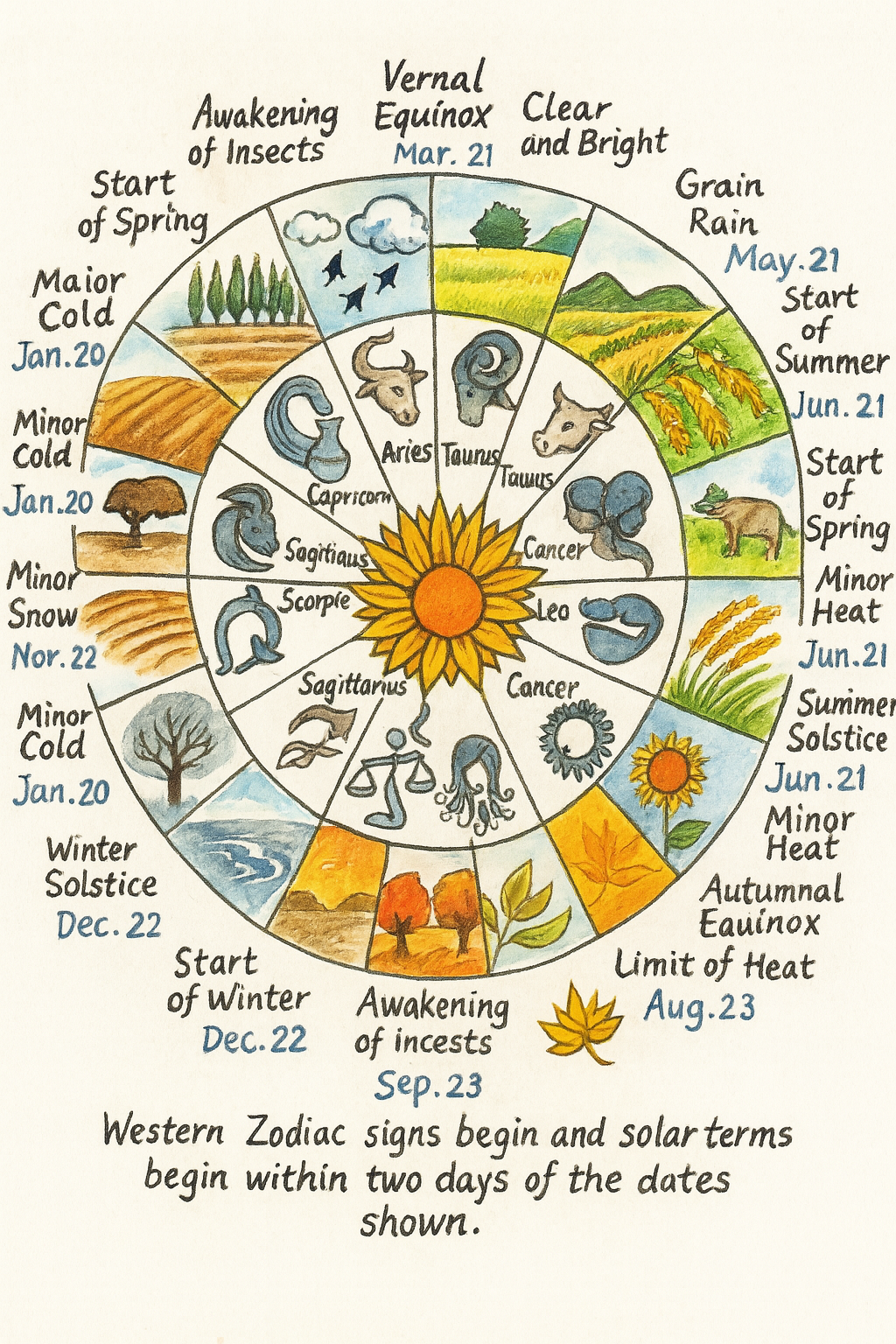
When you should light incense? Harmonizing with the 24 Solar Terms
Have you ever wondered when is the best time to light incense—not just for scent, but for aligning with your energy, emotions, or even the seasons?
Lately I’ve been diving into the wisdom of the 24 Solar Terms—a traditional Chinese calendar that divides the year into 24 micro-seasons. It’s been used for thousands of years to guide how people eat, sleep, move, and even… burn incense. And honestly? It makes so much intuitive sense.
Incense isn’t just fragrance—it’s a seasonal ritual. Here's a taste of how I now choose incense based on seasonal shifts:
Spring: Sprouting & Liver Nourishment
Lichun (Start of Spring – Early Feb)
→ Use sandalwood with green tea. The soft, woody base awakens Qi while the fresh tea scent refreshes the mind and gently supports Liver flow.
Yushui (Rain Water – Mid-Feb)
→ Try frankincense + patchouli. Frankincense assists smooth circulation and focus, while patchouli helps regulate dampness in the Spleen & Stomach system.
Jingzhe (Awakening of Insects – Early Mar)
→ Burn agarwood with a touch of mint. It stimulates Yang Qi, sharpens clarity, and invigorates your energetic movement for spring’s awakening.
Chunfen (Spring Equinox – Mid-Mar)
→ Choose lotus-blended sandalwood or water lily with cedarwood to create harmony, soothe emotions, and balance rising energy.
Qingming (Clear & Bright – Early Apr)
→ Use pure green tea incense or light aloeswood (low-resin agarwood) to clear mental fog, uplift the spirit, and match the season's clarity.
Guyu (Grain Rain – Mid-Apr)
→ Burn agarwood + myrrh. This earthy combo nourishes digestion, strengthens Qi, and helps stabilize energy during this fertile rain period.
Summer: Dispersion & Heart Nourishment
Lixia (Start of Summer – Early May)
→ Light rose blended with sandalwood to clear Heart heat, soothe emotional restlessness, and balance rising Yang fire.
Xiaoman (Lesser Fullness – Mid-May)
→ Use green tea + lemongrass for freshness and cooling. Helps release internal humidity and restore mental lightness.
Mangzhong (Grain in Ear – Early Jun)
→ Burn clove with agarwood to stimulate focus and combat summer fatigue while energizing mental clarity.
Xiazhi (Summer Solstice – Mid-Jun)
→ Try frankincense + lotus flower to calm the mind, stabilize Heart Qi, and soften the peak of summer intensity.
Xiaoshu (Lesser Heat – Early Jul)
→ Choose peppermint + sandalwood or camphor + aloeswood to regulate body temperature and support Lung Qi flow during humid heat.
Dashu (Greater Heat – Mid-Jul)
→ Burn amber + myrrh for deep calm. These grounding resins offer stillness and help cool internal heat under intense weather.
Autumn: Convergence & Lung Nourishment
Liqiu (Start of Autumn – Early Aug)
→ Use agarwood + sandalwood to stabilize Qi and gently shift from summer to autumn, supporting Lung Yin.
Chushu (End of Heat – Mid-Aug)
→ Try green sandalwood or cypress resin. These bring openness, help the body adjust to the temperature drop, and ease emotional transitions.
Bailu (White Dew – Early Sep)
→ Burn frankincense + snow chrysanthemum for moistening dryness and supporting better rest and Yin restoration.
Qiufen (Autumn Equinox – Mid-Sep)
→ Use mountain cedar + sandalwood to encourage inner balance, center the mind, and harmonize day-night Qi flow.
Hanlu (Cold Dew – Early Oct)
→ Choose myrrh + patchouli to retain warmth and moisture, nourish the lungs, and prepare for deeper cold.
Shuangjiang (Frost’s Descent – Mid-Oct)
→ Light sweet cinnamon + agarwood to gently warm the chest, stimulate Qi flow, and strengthen immunity before winter.
Winter: Storage & Kidney Nourishment
Lidong (Start of Winter – Early Nov)
→ Burn deep agarwood with a hint of clove. It supports Kidney Qi and stabilizes energy for the winter rest phase.
Xiaoxue (Lesser Snow – Mid-Nov)
→ Choose myrrh + amber to dispel gloom, ease tension, and create a secure inner atmosphere.
Daxue (Greater Snow – Early Dec)
→ Use dense resinous agarwood + old mountain sandalwood to nourish the Kidneys and preserve vitality during the deepest Yin phase.
Dongzhi (Winter Solstice – Mid-Dec)
→ Try amber + frankincense for warmth and gentle Qi ascent, perfect for the quiet turning point of Yin to Yang.
Xiaohan (Lesser Cold – Early Jan)
→ Light mountain cedar + patchouli to enhance physical resistance and strengthen energetic boundaries against biting cold.
Dahan (Greater Cold – Mid-Jan)
→ Burn sandalwood + benzoin for inner stillness, calm preservation, and deep replenishment as the seasonal cycle completes.
Mindful Incense Use for Enhanced Well-being
To truly benefit from incense wellness, a few practices are key:
-
Choose Natural: Always opt for natural stick incense. Pure, natural scents are subtle and emerge slowly after burning, unlike artificial fragrances that can be overpowering even unlit. Avoid incense that smells burnt or produces excessive smoke, as this may indicate impurities.
-
Ensure Ventilation: While natural incense is generally safe, any burning produces smoke. Always ensure good ventilation in your space to protect your respiratory health and keep the air fresh.
-
Create a Ritual: Integrate incense burning into your daily routine. Light a stick during meditation, yoga, quiet reflection, or before sleep. This mindful practice transforms it from a simple act into a powerful ritual for self-care and connection.
Embrace the Rhythm, Embrace the Scent
The 24 Solar Terms offer a timeless framework for living in harmony with nature. By consciously choosing scents that resonate with each season's unique energy and wellness needs, you can deepen your connection to this ancient wisdom. Monianlife's natural incense provides a beautiful way to do just that, inviting you to breathe deep, find your balance, and live a life in tune with the world around you.
Explore Monianlife's collection and begin your own fragrant journey through the seasons!
FAQ:
What are the 24 Solar Terms?
- The 24 Solar Terms are an ancient Chinese system that divides the year into 24 equal periods based on the sun's movement. This system, originating in the Yellow River Basin, guided traditional life and farming for millennia. It's recognized by UNESCO as an Intangible Cultural Heritage, highlighting its deep cultural significance.
2. What do the 24 Solar Terms represent?
- They represent the subtle shifts in seasons, climate, and natural phenomena throughout the year. Each term offers guidance for:
- Seasonal Changes: Marking the start and transitions of spring, summer, autumn, and winter.
- Nature's Rhythms: Indicating specific weather patterns, plant growth, and animal behaviors.
- Daily Life & Farming: Guiding agricultural activities like planting and harvesting, and influencing daily routines.
- TCM Wellness: Providing insights for adapting diet, lifestyle, and emotional well-being to align with nature's flow.
3. What is TCM?
- Traditional Chinese Medicine (TCM) is a holistic healthcare system with a history spanning thousands of years. It views the human body as an integrated whole, deeply connected to its natural environment. TCM aims to maintain balance and harmony within the body, and between the body and nature, to prevent illness and promote health. Its core principles include Yin and Yang, the Five Elements, and the concept of Qi (vital energy) flowing through meridians and organs. Practices within TCM include herbal medicine, acupuncture, dietary therapy, massage, and Qigong, all designed to restore and maintain the body's natural equilibrium.
Discover More in Monian
Explore our handcrafted incense holders and natural incense collections designed to bring peace and elegance to your space.
Discover Now


